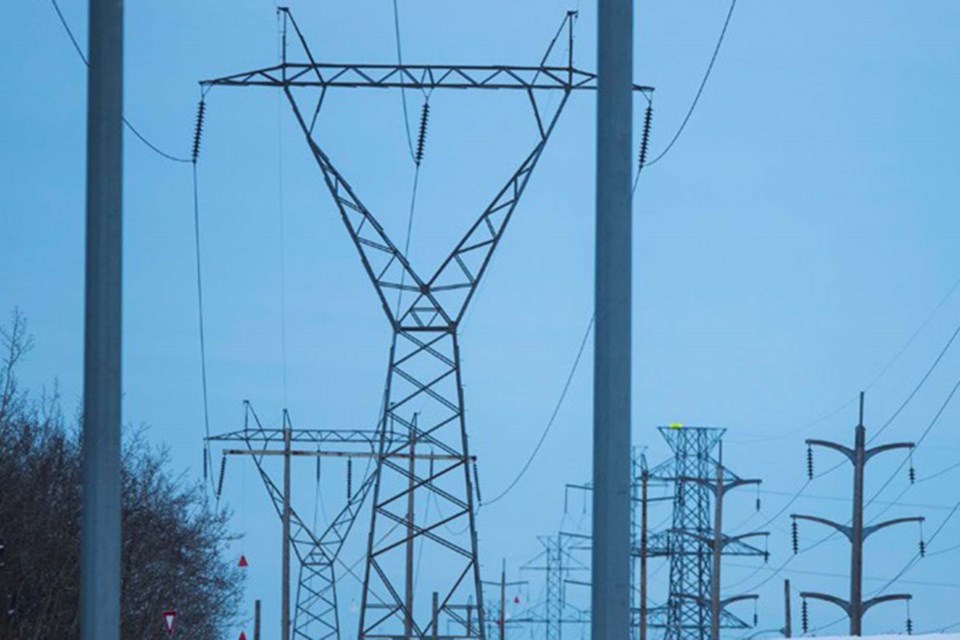Great West Media has received federal government funding to support a reporter to cover climate in Alberta.
Jen Henderson will feature in-depth reporting on where Alberta is at with actions to reduce carbon emissions and generation of less carbon-intensive energy, along with climate issues across the province as they intersect with industry, business, the environment, the economy, communities, and lifestyles.
Henderson has spent the last two years covering issues related to rural Alberta, funded through the Local Journalism Initiative.
If you have a story idea, please email [email protected].
An expert says the province needs to work on making Alberta's electricity grid smarter and cleaner to get it ready for the electric vehicle surge of the future.
Alberta’s grid will need upgrades to prepare for the slew of EVs that will be arriving in the next decade, said Binnu Jeyakumar, director of clean energy at the Pembina Institute.
When drivers charge electric vehicles, they are pulling from the electricity grid. In Alberta, roughly 65 per cent of the maximum capacity on the grid comes from gas, with coal making up 7.6 per cent of the generation. Some 25 per cent of the maximum capacity on the grid is generated through renewable sources such as hydro, solar, and wind.
So, even though an EV may itself be zero emission, the electricity that is powering it still has emissions. Jeyakumar said EVs produce much less carbon than traditional combustion engines, but to move vehicles to net zero, the grid will also need to be upgraded to be a cleaner source of energy.
The federal government has mandated that every car sold in Canada by 2035 must be zero emission and Jeyakumar said to do this, Alberta first must use carbon capture, utilization, and storage (CCUS); reduce the amount of gas-fired generation for electricity in the province; or use renewables and storage in a way that hasn’t been done before.
Although more electric vehicles in the province will mean more demand for electricity, Jeyakumar said, it doesn’t necessarily mean plenty of new power plants need to be built to charge them.
Demand-side management can help better use the electricity already generated in the province, Jeyakumar said.
“Even if the demand for electricity went on because of electric cars, but then you deployed massive energy-efficiency efforts and demand-side management efforts, you may not need to build as many power plants as you think you do,” Jeyakumar said.
Some strategies that can be used to manage demand are to have different utility rates at different times of the day, and to encourage people to charge or use electricity during non-peak hours, Jeyakumar said, which will stop the electricity grid from getting overloaded.
“And what that does is that it reduces our peak, so you may actually be able to prevent building a 300-megawatt power plant because everyone's shifting their load off of that peak time,” Jeyakumar said.
Energy-efficiency methods will also be useful to the grid, Jeyakumar said — creating efficient building envelopes, retrofitting homes and offices so they use less heat, and using energy-efficient bulbs can help the province better use the electricity it already generates.
One strategy being considered by experts in the field is using electric vehicles as batteries to hold electricity that can be distributed back to the grid when they are plugged in, Jeykumar said.
But even if the grid can manage to support millions of EVs by 2035, the province needs more infrastructure for those vehicles to be able to charge.
“We’ve got to make sure people have access to residential charging,” Jeykumar said.
“Across Canada most residential [electric vehicle] charging is happening or exists only for people who own single-family homes.”
But as the vehicles become more affordable and more hit the roads, there will be a much higher demand for at-home charging, Jeykumar said.
People who live in apartment buildings have no opportunity to charge electric vehicles, and Jeykumar said there must be provincial or municipal programs to support charging infrastructure.
New buildings must be built with the appropriate infrastructure to charge vehicles, and it must start soon, Jeykumar said, because it can take years to ensure everyone has a residential location at which to charge.
Older buildings must be retrofitted to make sure electric vehicles can charge. It can cost anywhere from $100,000 to $200,000 to install the appropriate tools and technology needed, Jeykumar said.
While many EVs will be charging at home, plenty of drivers will need a charge while on the road. Jeykumar said it is important to have the infrastructure in place to enable vehicles to travel through the province.
“So, how can we leverage federal funding to deploy fast charging and residential charging in Alberta? And that is a key question to ask,” Jeykumar said.
A 2021 survey conducted by KPMG shows that 54 per cent of Albertans were likely or very likely to purchase something electric as their next vehicle. As of last year, there were 3,527 electric vehicles registered in Alberta, nearly 10 times more than 2017. There were a total of 3.6 million vehicles registered in the province overall.




